eISSN: 2577-8250


Research Article Volume 1 Issue 1
1Department of Medical Sciences, University of Trieste, Italy
2Forensic researcher, Super Brain Research Group (SBRG), Italy
Correspondence: Paolo Debertolis, Department of Medical Sciences, University of Trieste, Italy
Received: July 26, 2019 | Published: August 1, 2017
Citation: Debertolis P, Gulla D. Archaeoacoustic exploration in montebello castle (Rimini, Italy). Art Human Open Acc J. 2017;1(1):11-17. DOI: 10.15406/ahoaj.2017.01.00003
After seven years of research on sacred sites in Europe and Asia from an archaeoacoustic point of view, another study was completed in Montebello Castle, otherwise known as Azzurrina’s castle. It is located in Montebello Torriana (Rimini, Italy) above the Valley of Marecchia and Uso. The hill on which the castle was built is an interesting archaeological site whose origin has been lost in time. We know that in the third century AD the Roman Empire erected an observation tower in a part of the castle, the remains of which are still present today. However this tower was built on a well known sacred site, used by Celtic civilizations, which had been present for a long time in this valley before Roman domination. All our results show that a lot of the historical myths connected to the castle could be ascribed to physical phenomena located in this site, in a similar way to other recognized sacred sites we have analysed in Europe.
Keywords: archaeoacoustics, physical phenomenon, trv camera, piv, uv, malatesta, Montebello, castle
Archaeo-acoustics or archaeoacoustics, after an initial moment of skepticism from the academic world, is nowadays a well known complementary discipline of archeology and anthropology which may help expand our understanding of why certain sites were considered sacred in ancient times. It is the right method to analyse archaeological sites which sometimes have interesting sound characteristics.1-18 But the term “archaeoacoustics” does not simply means the study of sound in archaeological contexts, but also all physical phenomena existing in those locations. It may also help to explain why ancient structures were built or carved into the rock. Ancient times were not devoid of noise or spent in silence; we know the human voice used in song as well as the vibrations produced by musical instruments remained the highest expression of culture for a long period. Natural sound phenomena were used in several civilizations to create impressive rites, with some ancient structures modeled in a certain way to directly influence the mind through the vibrations they produced towards a particular state of consciousness.
In previous research, SBRG demonstrated the existence of a relationship between mechanical vibrations from resonance phenomenon at some Neolithic temples and brain activity.4-17 This point of view, with regards to ancient sites, has had more expansion in the nineties and our research group has followed this road since 2010 investigating and publishing our conclusions1-18 on a large group of “sacred” sites in Europe and Asia (England, Bosnia, Serbia, Slovenia, Macedonia, Italy, Portugal, Malta, Turkey and Greece).
Using modern digital recording techniques it is now possible to record non-audible sound frequency bands very clearly. These non-audible bands, such as ultrasound or infrasound, are able to modify brain activity. It is also possible to make them visible and display the magnetic fields affecting the mind; to do so we used UV Imaging, photography and special software to show the micro-movement of air crossed by magnetic forces.13-15 We discovered that the majority of sites from Gobekli Tepe in South-East Turkey to Xaghra Stone Circle in Gozo (Malta), from Alatri Acropolis in Italy to Felix Romuliana Palace in Serbia and Epidauros in Greece are all placed over sources of natural low frequencies or magnetic fields which affect human brain activity and its body. Following the previous research by other authors of some sacred sites in the UK and Ireland (Robert Jahn with PEAR research group from Princeton, USA and Cook and Pajot from UCLA, USA),19,18 we also reproduced the band of vibrations found in the laboratory confirming that these vibrations interfere with the human mind in various ways.4 Sometime these bands of sounds have a direct effect on the human body without a person being aware of the associated mechanical vibrations, especially infrasound’s. So after the analysis of about thirty-five ancient sites from 2010 to 2017 the hypothesis of our research group was confirmed and became a thesis. This is: in some archaeological sites considered sacred for thousands of years, there are measurable natural audio phenomena or magnetic fields that make these sites somewhat more mystical than others.
Any severe and artificial extreme sound imposed on the sonic environment has a profoundly destabilizing effect on the individual, indeed infrasound’s have been used in the context of wars in the area of acoustic weapons.2,21 However, natural low vibrations with an absence of high pressure can have a strong influence on human health and some people can perceive very low-frequency sounds as a sensation rather than a sound. Infrasound may also cause feelings of awe or fear in humans and given it is not consciously perceived, it may make people feel that strange or supernatural events are taking place.21 So it is possible to hypothesize that, where a lot of natural low vibrations are present, ancient populations considered these sites to be “sacred”.21 Through archaeoacoustical analysis, it is possible to demonstrate that there was some knowledge of acoustic phenomena in the past, which could for example have been used in ancient rituals.1-17 But how can many of the phenomena affecting the mind be the source of myths connected to those sacred locations? So this time we studied a site full of legends using an archaeoacoustic approach to try and explain the origin of these myths. We applied this approach to the historical castles of Gropparello16 and Montebello in Italy. We chose both castles as objects of our study, because they are very famously linked to many popular myths and unexplained legends. This scientific paper is a summary of the results we found in Montebello Castle in the Rimini area in northern Italy.
The Castle of Montebello, otherwise known as the Castle of Azzurrina due to a myth still existing nowadays,22 is located in Montebello Torriana (Rimini - Italy) above the Valley of Marecchia and USO.23 It is an interesting archaeological site whose precise origins have been lost in time. We know that in the third century AD the Roman Empire erected an observation tower whose remains are still comprised today in the structure of the castle. But during Celtic domination the site was considered sacred and in that site existed a cult structure (Figure 1).
In the middle Ages with the successive layers of defense it became a real castle whose first documentation dates from the twelfth century. In fact, the castle from 1186 became the property of the Malatesta family who bought the estate for the high sum of 110 pounds of golden Lucca coins (Figure 2). Subsequently the Malatesta lost the castle in 1462 to the troops of Pope Pius II who in 1464 settled in the feud “estate”, and then in the castle.24 He gave the castle to the counts Guidi di Romagna, who have remained the owners to the present day. In 1989 the castle was transformed into a museum and opened to the public.

The myths and legends about this castle appear in literature starting from the seventeenth century, but many people nowadays also report some experiences.23 The hypothesis of our study is that the many physical phenomena inside the castle originated before the rise of the Roman fortress (and later castle). That the hill upon which the castle sits was a sacred place and was specifically chosen because of its natural characteristics. Only later was the place used for a defense settlement in wars (Figure 3).
During the day and night of June 21, 2015, which happened to be the summer solstice, and thanks to special permission from the manager, to whom we are really very grateful, we placed our equipment inside the castle. During this period the castle was closed off to public visitors so we could carry out our research. We chose that night in particular because physical phenomena appear to be influenced by the increases of peculiar astronomical situations, as at other sacred sites we have studied (such as the Acropolis of Alatri, Italy). However the research was repeated some months later getting the same results.
For recording sounds we used two types of dynamic high-end microphones both extended in the ultrasound field together with a digital portable recorder with a maximum sampling rate of 192 KHz (Tascam DR-680 of TEAC Group), but we controlled the results with other digital recorders (Tascam DR-100 and Marantz PMD661) with less technical characteristics.
At the same time for the recording in the air we used professional studio microphones with a wide dynamic range and a flat response at different frequencies (Sennheiser MKH 8020, response Frequency 10Hz-60.000Hz) along with shielded cables (Mogami Gold Edition XLR) and gold-plated connectors (Figure 4). Before recording we used a spectrum analyser Spectran NF-3010 (Figure 5) from the German factory Aaronia AG, to search for electromagnetic phenomena present around us which could have had a negative influence on our results. Praat program version 4.2.1 from the University of Toronto and Audacity open-source program version 2.1.2 for Windows and Linux were used to analyze the various recorded audio tracks.
We also used a geologic device for confirming what we found on the microphones in the infrasound range. It was the GeoBox SR04S3 Datasheet from Italian firm SARA (Figure 6). The digital sensor SR04 GeoBox is a high-performance instrument particularly suitable for acquiring signals for seismological and geophysical surveys such as the Horizontal/Vertical Spectral Ratio - HVSR. The SR04 GeoBox is designed especially for recording ambient seismic noise, but it can also record earthquakes and artificial vibrations. Compact, reliable and simple, it is fully functional within minutes after deployment.
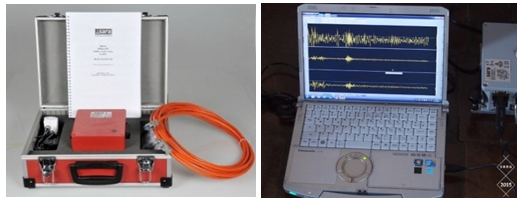
To make the shape of the magnetic field visible, we used UV photography and a vector program for PC (PIV – Particle Image Velocimetry). This consisted of a modified Canon EOS 1100D digital camera, with its anti-aliasing filter removed. The camera used was modified in Canon’s Italian factory. Any new camera can be modified in this way, however Nikon, Sony and Olympus cameras can only be modified by a private technician automatically invalidating the warranty of the firm, and the camera can lose some characteristics necessary for scientific use. In the ultraviolet band (UV) the absorption of lenses of normal optics (lenses without calcium fluoride and quartz for forensic use) is very strong, usually a normal optic is unable to allow electromagnetic waves below 320-350nm to pass through, but it is sufficient for analyzing the UVA band (400-315nm) where it is possible to perceive the movement and the behavior of dust suspended in the air, and gas flows as steam shaped as a dipole in the magnetic field.13
Particle Image Velocimetry (PIV) by Dantec Dynamics from Denmark is the software used to analyse this movement using UV video and photographs. PIV is used in industry as an intuitive measurement technique to measure two or three components of velocity in a variety of flows. The application of PIV in research and industry is widespread, due to its ease of use and accurate data representation. As easy and intuitive as PIV is, it involves many cross-disciplinary challenges, from classical optics and imaging to the use of dedicated state-of-the-art digital electronics and lasers. The principle of how PIV works is very simple: two consecutive shots illuminate a slice or volume of a flow field with particles suspended in the flow.13
The scattered light from the particles is recorded in two consecutive images on one or several digital cameras. The images are sub-divided into smaller areas to calculate the mean particle displacement between two corresponding sub-areas. The particle displacement is calculated using cross-correlation or Least Squares Matching techniques. Since the time between the shots is known, the particle velocity can be determined. Taking into account the magnification of the optical setup, the absolute velocity field can be derived. The velocities calculated from an image pair are an instantaneous snapshot of the flow viewed by the cameras. PIV results are an accurate representation of the flow presented to the user and viewers in an easy to understand and visual manner. The presentation is aided by advanced software post-processing. Dantec Dynamics is the leading provider of laser optical measurement systems and sensors for fluid flow characterization and material testing (Figure 7).
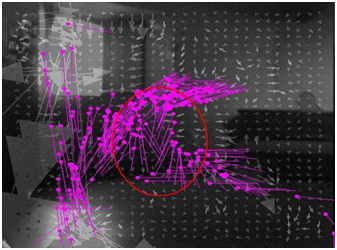
In order to make the effects and dispersion of vibrations into the air visible a TRV camera (Variable Resonance Imaging Camera, known in Italy as Merlin camera or Defend X system in Japan) was used, along with specific annex software, Vibraimage Pro 8.3, able to process the minimum vibratory differences present in the air resulting from the movement of air molecules visible only instrumentally in the various video frames. The software connected to the TRV works by highlighting the movement and change of chromaticity of the pixels of the collected image in the UV band (Figure 8). For this, a lower resolution is used (640x480) to avoid overloading the computational power of the computer. Reassembling the frames collected one after the other (standard deviation or STD) we have an image of the vibrations in the air spreading from underground. This technique, already widely used in previous investigations and published extensively in scientific literature5-16 has been able to detect deep vibrations from the movement of underlying waters that invest the overlying areas. In this respect, it has proven to be a reliable technology. Information on the integral parameters can be obtained using video analysis TRV (Variable Resonance Imaging Camera) technology, which provides quantitative information of the periodic movements of any part of the imaged object.
The TRV image analyser system is used to monitor vibrations in normal or altered states. The change from the initial multicoloured image to a single colour state indicates that the vibrations have passed from a wide spectrum to a narrow spectrum of frequencies, which indicates a state of coherence in the examined object. As a result, the detected frequency spectrum changes completely when the examined subject enters into an altered state of vibration. All the parameters are analysed and stored from moment to moment by the cameras software. At the end of the trial a "report" is generated showing the spectrum of vibrations.
The pictures below show a distribution of horizontal coloured stripes around the vibrating subjects (the numerical row shows the obtained individual frequencies). These represent the spectral distribution of vibrations in a band between 0.1 and 10 Hz according to a scale of pseudo colours from purple to red (Figure 8). The algorithms for determining this are based on a mathematical statistical system.
The TRV system’s camera has a common CCD backlit, with a three Megapixel sensor. The protective anti-aliasing filter was removed to extend its vision beyond visible light into the infrared (IR) and ultraviolet (UV) range the lens is a 25 mm quartz-fluorite with pass band from 200nm to 1800nm. It is connected to a PC.41
This system was used to visually confirm the subsonic vibrations detected in the two previous methods, as this device is also capable of identifying the dispersion of low vibrations in the environment.10-16 This extended application is the same used in engineering to value the vibrations of a structure, for example in bridges.14
We examined the various rooms of the castle in contact with the ground and we were not disappointed. From the beginning our equipment perceived an abnormal vibration situation. Low frequencies are present in abundance everywhere and particularly in the tower, where the base acted as an ancient cold food storage area and where it is said, the daughter of the commander of the castle disappeared, the famous child Azzurrina from whom the castle took its alternative name used by local people.22 In this area there is also an old well with blades on the sides, now closed by a floor that could have acted as a sounding board for the frequencies coming from underground. The collection of data following the same method as other sacred sites we had analyzed where we used similar natural transducers. In particular, using the normal standard protocol registration SBRG (Standard SBSA), we found the frequency peaks of 7, 14 and 23 Hz (the last clearly perceivable by ear) at a volume from -34db to -38db (Figure 9). These three peaks that alternate in volume, are always present. As regards to the origin it is possible to hypothesize they are caused by the movement of groundwater or even the movement of the geological fault. In both possibilities the vibrations appear to be stable and continuous.
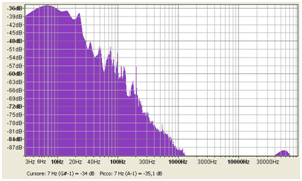
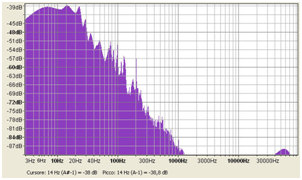
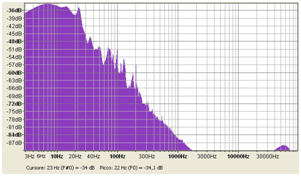
That volume of vibration has to be considered as very strong and would definitely have an effect on the mind. The most interesting results have been achieved in the so-called "Room of the Strongbox", placed at ground floor of the castle, where in recent years the ground penetrating radar showed the presence of a circular object of about half a meter across, a gold or silver plate or a shield, buried in the center of the room at a meter and a half under the paving. In this room in the past years there have been several occurrences of unexplained physical phenomena (Figure 10).
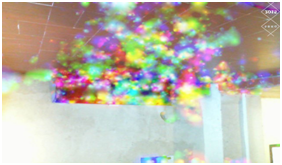
From the analysis by the variable resonance camera (TRV camera), it has emerged this room has a huge amount of vibration and in addition a spiral magnetic field which seems to interact with each person who comes into contact with it (Figures 11-16).
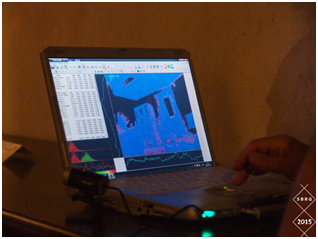
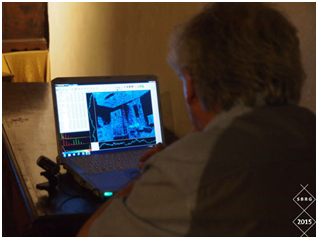
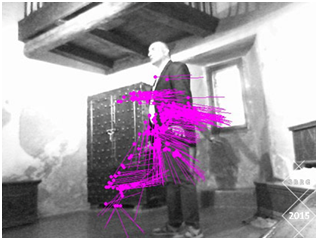

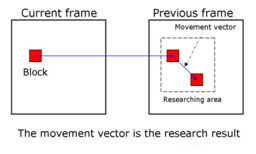
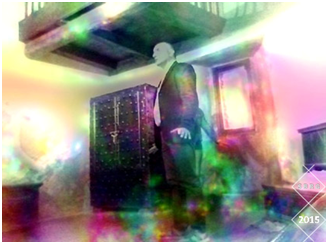

Through the use of special software that is capable of enhancing the variations in brightness of the camera’s sensor pixels, it was possible to see the spread of vibrations from the underground air. In Room of the Strongbox there is evidence of a high volume of vibrations (Figures 11-16), most likely originating from the underground water capable of generating a magnetic spiral disturbance (Figure 13), something that has been well-documented using UV band photography, video and by computer analysis according to the Block Matching method (Figure 15).
TheBlock Matching method divides the image into areas (blocks) associated with the detection of air movement that changes the brightness of the pixels within the digital image. Software calculates the estimated motion of air particles in a magnetic field by comparing the previous frame (where the image is separated through giving a value to an area) then sliding the pixels to obtain the maximum displacement area (Figure 15). The difference in pixel brightness is determined by the steam present in the air particles which naturally tend to form in a similar fashion to a dipole in a magnetic field. This micro movement is not perceived by the naked eye, but can be detected by the camera. The frames obtained from the video are individually analyzed and placed on the stack by the software (which is somewhat slow due to the huge amount of data processing required).25
These vibrations appear to be so powerful they can be felt or perceived through the palms of the hands via the Meissner corpuscles (receptors).These receptors are found in the dermis surface layer of the skin occupying the marginal portion of the dermal papilla. They are particularly abundant in thinner areas of skin without hair such as the ends of the fingers, soles of feet, lips and nipples. They are deputies to the fine movement receptors that are tactile and can discriminate lower vibration frequencies. These receptors are widely stimulated by the vibrations found within this room.
Using the geological device GeoBox it was possible to confirm all the data taken by ultra-sensitive microphones (vibration coming from below at 7, 14, 23Hz). In addition it was also possible to recognize a cavity, possibly natural or artificial, laying below the castle and working as a musical box for amplifying, by resonance, the vibrations probably coming from the movement of underground water (Figure 17).
These preliminary results were all confirmed in a further detailed mission carried out some months after.
After seven years of experience of archaeoacoustic analysis in various sacred sites in Europe and Asia we can confirm that every sacred site was chosen by ancient people for the extraordinary physical phenomena existing in those locations. These physical phenomena had a direct effect on human brain activity causing sensations ranging from an altered state of mind to a mystic ecstasy. There is no doubt that in Montebello Castle there are a great number of physical phenomena in all parts of the structure and in two particular locations: the ancient basement below the Roman tower and the Room of the Strongbox.
Secondly, we can confirm that this castle has all the characteristics we found in several “sacred” sites we analyzed in recent years in our research, so the myth that the castle was built over an ancient sacred site is compatible with our results.
Thirdly, the level of the volume of vibrations we found in the castle is able to generate altered states of mind. These physical phenomena we discovered could have caused the great number of curious hallucinations that some visitors perceived and reported in several episodes, while visiting this site.
Fourthly, but equally important, we can confirm the existence of a big cavity below the castle. We cannot say if the cavity we found by geophone is natural or artificial, but we can confirm that it exists. We found a similar situation in another castle built on an ancient Celtic sacred site (Gropparello Castle),16 we have already published the results of that study. In that case the legend speaks about some cavities used for contact with the underground world. Due to the similarity in the origins of these two castles, we suggest a deeper research by georadar for defining the exact location of it and a possible lost entrance below the basement of the castle.
Overall we can suggest that other researchers could verify our results using their own methodology, but we can affirm when science has the right approach to ancient myths sometimes it can find an explanation for every legend, resolving mysteries which impressed people for centuries. At this point we can say that a very important physical phenomenon exists in Montebello Castle, able to create an altered state of mind which can explain the great number of visions reported by tourists and visitors even to this day.
Archaeoacoustics provides a way to offer new interpretations on anthropological questions pertaining to ancient architecture and populations. After our investigation on Montebello Castle we can confirm that the ancient castle, or better the location where the castle is based, has all the characteristics of an ancient sacred site from the remote past. The possibility to reach an altered state of mind by natural phenomena existing in this location in particular conditions is very high. So it is possible that all the legends of ghosts and entities living in this castle are only the result of dreamlike states of conscience from the altered state of mind of particularly sensitive people affected by the strong vibrations existing in this site. We have been able to replicate the confirmation of the connection between brain activity and natural physical phenomena.1-18
So we can conclude that this site was probably a very ancient sacred location, the origin of which has been lost in the past. The high number of vibrations perceived both in subsonic and audible bands and the magnetic fields suggests the idea that through these phenomena the ancient population was able to influence the perception of the human body to obtain different states of consciousness without the use of drugs or other chemical substances making their rituals very impressive.
Our research demonstrates that archaeoacoustics with its effect on the human body, appears to be an interesting new method for reanalysing ancient sites in order to re-discover a forgotten method that affects the emotional sphere of human consciousness. Modern recording technology is now able to give greater clarity to the origin of many interesting phenomena, reaffirming the aura of legends that pervades some sacred places.
The research team SBRG is extremely grateful to Mrs. Daniela Condello Tiboni who has devoted much of her time for making available every corner of the castle for archaeoacoustic analysis. At the same time we are grateful to the owners of the castle, the Counts Guidi di Romagna, for their availability.
The authors are very grateful for the support received by non-profit scientific association Super Brain Research Group for the develop of this archaeoacoustic research.
The author declares no conflict of interest.

©2017 Debertolis, et al. This is an open access article distributed under the terms of the, which permits unrestricted use, distribution, and build upon your work non-commercially.